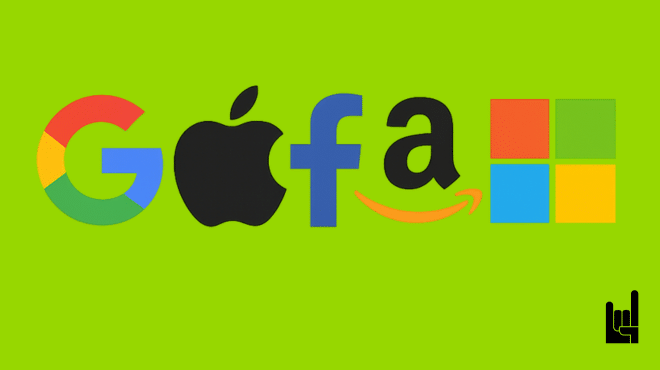You’ve mostly heard about B2B and B2C business models, but there’s a third one, namely D2C.
D2C or Direct-to-Consumer business model might be the answer for manufacturers both big and small. But it has some peculiarities that you’ll have to navigate to succeed.
Let’s explore how to make D2C marketing work for your business, starting with understanding what D2C is and how it works.
What is D2C Marketing?
D2C is the Direct-to-Consumer business model, where a manufacturer sells their products directly to consumers through their own online stores, cutting out the middlemen in the form of retailers.
In the same fashion, D2C marketing is marketing employed by manufacturers to attract consumers.
The strategies and techniques of D2C marketing are very similar to B2C marketing, with the caveat that branding and positioning are different because it’s a manufacturer, not a retailer who is doing the marketing.
This is what makes D2C marketing so essential.
A brief look at the D2C market
The D2C market is an evolving one. Selling goods directly to consumers isn’t exactly a novel idea, but it has seen huge growth since the COVID-19 pandemic. In 2023, D2C sales by established brands were estimated to exceed $134 billion, with projections suggesting this figure will rise to approximately $186 billion by 2025.
And the D2C doesn’t market doesn’t show any signs of slowing down.
This shows a good growth dynamic of the D2C market. Consumer behaviors show why that might be the case.
A 2023 survey revealed that approximately 44% of respondents had purchased clothing and accessories directly from D2C brands, indicating a significant consumer shift towards direct purchasing channels.
However, two trends might make the D2C market seem a bit less perfect and more challenging.
First, as of 2023, older, established brands outperform digital-native brands by a wide margin when it comes to D2C. That’s hardly shocking as brands like Nike definitely have more budget to spare on creating digital assets and running D2C marketing campaigns. But it’s worth knowing that you might be competing with large manufacturers and you have to be smart about your strategy.
Another problem for D2C companies is the eCommerce marketplaces. Over 60% of online purchases are made on marketplaces, so D2C marketers are pressed to compete. One of the most straightforward ways to compete with marketplaces like Amazon is to offer unique deals and unique products to the customer base you gather on your own digital channels.
Benefits of D2C marketing
Despite these two drawbacks, D2C marketing has a lot of benefits for the manufacturer. Here are the three most prominent ones.
1. First, marketing directly to consumers gives companies more control over branding. Since you control the whole marketing lifecycle, you can tell a much more cohesive story about your brand. Controlling the marketing efforts also gives you a lot more understanding of your customers.
2. You have more tools to understand them, too. From ad performance statistics to building customer journeys, you have plenty of data to use for learning more about your ideal customer.
3. These two benefits of D2C combined lead to a third one. With more power in your hands and margins higher than that of wholesale, you have the potential to increase revenue and grow your company.
All of this, however, comes at the expense of having to invest more in marketing and trying to manage an increasingly complex digital marketing system.
5 Winning D2C Marketing Strategies
Although D2C marketing strategies are similar to B2C, the D2C vs B2C comparison highlights important differences in positioning and messaging that you have to keep in mind.
Here are the five best D2C marketing strategies with remarks on how to make it work for manufacturers.
1. Search Engine Optimization (SEO)
SEO probably has the most potential for D2C in terms of increasing sales. Research shows that 28% of consumers bought directly from the manufacturer after an online search. That means online search was the primary touchpoint before the purchase, and investing in SEO, as part of an organic marketing strategy, can translate directly to more sales.
Creating and executing a winning D2C SEO strategy is not a task for a single day. No matter if it’s B2B, B2C, or D2C, eCommerce, Marketplace, or SaaS, SEO is a long-term strategy.
In short, here are the 4 steps of the most successful SEO strategies.
1. The first stage is keyword research. As a manufacturer, you should also pay special attention to branded keywords. Your goal is to have your website be the first on search engine result pages for branded searches like these.

Most likely, the list of your competitors will include retail websites, eCommerce platforms like Amazon, and a small percentage of other manufacturers that pursue the D2C model.
These two steps conclude the planning process. Now you can move towards optimization.
3. During the optimization stage, you have to take the list of your keywords, sort them to different product and category pages, and add them to the text on the page, and title tags.
For informational keywords related to your field, you can create articles and optimize them for these keywords. This way, when a consumer tries to find information related to your industry, they will be introduced to your site and will learn about your brand.
Some content ideas include guides to choosing and using your products or answering popular questions like in the example below.

Accordingly, you should keep an eye on keyword rankings to know whether the chosen optimization strategy works. For this purpose, you can use a specialized SEO Rank Checker, which allows you to keep track of your keyword positions in SERPs, discover keywords that bring the most traffic, prevent traffic losses, and get other vital information to take advantage of your D2C SEO campaign.
4. The last SEO activity you need to do is link building. The more quality backlinks your site has, the more authority Google assigns to it, and the better your rankings across all keywords are going to be.
Typically, link building —and we mean white-hat link-building—involves a lot of groundwork with looking for websites you can collaborate with. Since you’re a manufacturer, you might also have more success with building links from news media.
Regardless, SEO, and especially link-building, is one of the marketing activities D2C brands outsource the most, as it needs many hands on deck to be accomplished.
2. Referral/ Word of mouth
Even though online search is the first touchpoint for many purchases, no marketing can beat word-of-mouth. As much as 88% of consumers say they trust recommendations from friends and family more than any form of advertising.
The problem is there is little you can do to influence somebody’s decision to recommend your company to a friend. The key to word-of-mouth marketing is excellence.
If you’re already striving to create the best products and customer experiences for your shoppers, you’re on the right track.
To increase the number of referrals, you can introduce a referral program. Offer a small gift or a discount to people who recommend your business to friends and family, and you’ll get a stream of leads for a very small price.
You can implement many referral marketing strategies, such as using templates and technologies and channels such as chatbots and email.

3. Influencer marketing
Influencer marketing is very close to word-of-mouth in terms of its role in D2C marketing. Consumers trust influencers, especially ones with smaller, more niche followings. That said, they trust them less than their friends, but more so than traditional ads.
The best use for influencer marketing for a D2C brand is increasing brand awareness. By finding influencers who cater to a demographic that might be interested in your brand and letting them create content about your products, you’ll introduce thousands of consumers to the brand. To streamline this process, you can leverage influencer marketing platforms, which help you identify and connect with the right influencers for your target audience.
Apparel and cosmetics are the types of products that you can easily find influencers for. But it’s possible to market with influencers who have audiences adjacent to your product. For instance, if you make furniture, you can partner with bloggers who talk about home decor or DIY bloggers.
Paying for an ad with an influencer with millions of subscribers might be beyond your budget. But you can market effectively even with influencers who only have five thousand subscribers. You’ll just have to find more people like this to cover a wider demographic.
A bonus is that these micro-influencers are likely to work with you for minimal pay or even in exchange for your products.

Even though influencer marketing is mostly effective at the top of the sales funnel, you might drive some sales with it directly, too. The standard way to do that is to offer a discount specifically for people subscribed to the influencers you’re working with.
4. Conversion Rate Optimization (CRO)
CRO is the process of finding opportunities to turn the same amount of traffic into more paying customers. This strategy can help you increase the ROI of all your marketing strategies and drive more revenue.
Doing CRO involves three major steps — looking for growth opportunities, testing ideas, and implementing the findings.

For instance, since we know that D2C consumers are very price-sensitive in terms of shipment, we can try changing the pricing policy and announcing free shipping with a banner like this.
If it results in increased sales, we implement the changes and work on ways to let consumers know your shipments are free now.
5. Email marketing
The marketing channel that not only refuses to die, but it’s possibly the channel with the most predictable ROI.
What makes email marketing work so well is that it can be used for the entirety of the growth funnel. From lead generation to sales promotion and sales, here are the different ways you can use this channel:
Welcome sequence for new visitors: Once a visitor subscribes, engage them with an automated welcome email sequence. This sequence spread over several days, educating new subscribers about your brand and products, and gradually guiding them from being newcomers to well-informed customers.
Abandoned cart recovery: Cart abandonment sucks but thanks to email marketing, it sucks a lot less. A multi-step email flow can re-engage customers who have added products to their cart but did not complete the purchase, effectively reducing your cart abandonment rate.
Sales and special promotions communication: A great way to announce sales, special promotions, or exclusive offers using bulk email services. The key is to make these communications feel exclusive and special, ideally offering something extra to your email subscribers that isn’t available to the general public.

Post-purchase communication: After a customer makes a purchase, they should be entered into a post-purchase email flow. This series can provide them with personalized content, such as how-to videos or tips on making the most of their purchase, based on the specific products they bought.
Automated refill reminders: For products that are used regularly and need replenishing, set up automated reminders. These emails, sent at an appropriate time after the initial purchase (like a month later), can prompt customers to easily reorder products like consumables or subscription items with a single click.
You can try giving your email subscribers first access to new products for a limited time or more custom product options.
3 D2C Succesful Marketing Examples
Pablo Picasso once famously said that “good artists borrow, great artists steal.”
Whether you want to do one or the other is entirely up to you; we’re just going to leave some of the best D2C examples and success stories of the last decade.
1. Warby Parker (Eyewear)

Warby Parker is one of those brands that come to mind when you think of a D2C model that managed to disrupt an industry. In this case, Warby Parker cut out the middleman in the eyewear industry to provide better pricing and more stylistic choices to consumers.
Warby Parker was digital-first from the start, building a strong social media presence and marketing their products mostly on the internet.
They have also introduced a charity incentive where they pledge to give a pair of glasses for free to someone in need for every pair of glasses sold. Since progressively more Millenials and Gen Z want to shop with ethical retailers, this probably positively influenced the brand image.
Right now, the brand image of the company has grown and so has the business itself. As of May 2024, Warby Parker operated 245 stores and announced plans to open 40 new locations within the year, aiming for a total of 900 stores in the future.
There are three lessons you can learn from Warby Parker:
- Starting online and adding physical stores later can help you reach more customers and build trust
- Giving back to the community makes customers more likely to support your brand
- If people already know and like your brand, you can spend less on advertising and still grow
2. Casper (Mattresses & Bedding)

Casper is the company that revolutionized sleeping. It positioned itself as the Nike of sleeping and branched out into much more than its original product, mattresses. Thanks to effective online marketing and bold branding, Casper has served over 1.4 million customers from its founding.
What’s more, the company went for wholesale even though most of its sales were still D2C. Since 20218 you can buy Casper mattresses from traditional retailers like Target and Costco. This both helped with raising profits but likely contributed to brand awareness, as seeing a product in popular stores might have given it more credibility.
However, Casper isn’t doing as well right now. In January 2022, Casper was acquired by Durational Capital Management, transitioning it from a publicly traded company to a privately held entity. In November 2024, Casper underwent another ownership transition, and it was acquired by Carpenter Co., a manufacturer specializing in polyurethane foams and related products.
There are three lessons you can learn from Casper:
- If you invest in bold branding, you can grow your sales very quickly
- If you fail at unit economics, no amount of customer base growth can save your bottom line
- Don’t hesitate to combine D2C with wholesale
3. Misfits Market (Online groceries)

Misfits Market is a less-known D2C success story. It has now become a $2 billion company, and has found success thanks to combining an excellent business model, a great branding idea, and clear digital marketing.
Thanks to this company’s product, delivery of grocery bundles for specific meals, it lends itself to influencer marketing. Right now, most of the posts you can see on their Instagram are made in collaboration with food bloggers.
This strategy combines authentic recommendations of the product and an engaging way to show it. Misfits Market also invests heavily in other social media platforms, with Pinterest, Facebook, and TikTik being at the top of their priorities.
Being environmentally friendly helps their brand image a lot. The company partners with hundreds of farmers to sell their products that would otherwise go to waste. They’ve also put effort into their CPG market research—they use organic packaging and offer a free nationwide package recycling program. Considering the trend towards ethical consumption, this is a win with the younger audience.
But the most important factor of their success is excelling at what they do. They are delivering fresh produce directly to consumers and providing a great customer experience. Without this, no amount of marketing and branding could work.
There are three lessons you can learn from Misfits Market:
- Partner with influencers who align with your product to make your marketing more authentic
- Sustainability efforts resonate strongly with younger, eco-conscious consumers
- No amount of marketing can replace delivering a high-quality product and great customer service
Conclusion
D2C brands are not a “hack” or a “gimmick”. They are here to stay. However, to stay, and grow, they need the right strategy. And the right execution.
Are you a D2C brand that is looking to grow?
Contact us and let’s find out how we can work together.
Was this article useful?

I write for GrowthRocks, one of the top growth hacking agencies. For some mysterious reason, I write on the internet yet I’m not a vegan, I don’t do yoga and I don’t drink smoothies.




